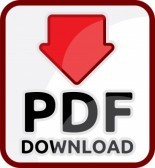Yu. P. Sukhanovskii, A. V. Prushchik, Yu. A. Solov’eva, S. I. Sanzharova
All-Russia Research Institute of Arable Farming and Soil Erosion Control, ul. K.Marx, 70-B, Kursk, 305021, Russia
In the paper it is shown that for developing a strategy of rational use of the remaining soil resources a methodology is necessary which must include methods of solving the following tasks: objective evaluation of soil resources; evaluation of their dynamics for the past time; long-term prediction of soil resources dynamics; search for a compromise between the necessity of decreasing soil degradation (erosion) and available economic possibilities. The solution of the tasks mentioned above is discussed, eroded chernozem soils of the arable lands of Kursk Region taken as an example. The quantity of the soil resources was evaluated by the plowland area and the thickness of humus horizon, and their quality (fertility, productivity) was evaluated by the humus supplies in the soil layer 0–50 cm. The dynamics of the soil resources was evaluated by the dynamics of these parameters measured. Data on the reduction of chernozem soil resources approximately within 200–250 years after the virgin land was plowed up are presented. It is shown that it will take thousands of years to restore the thickness of the humus layer of eroded chernozem soils, and hundreds of years to restore humus supplies. It is practically impossible to stop erosion on a large area for a relatively short period of time. A strategy of erosion reduction to the level of soil formation is necessary.The strategy was divided in stages for which an approach to the evaluation of tolerable erosion soil loss (TESL) was suggested. The approach is the search for a compromise between the rate of soil formation, the thickness of humus horizon, soil productivity (quality, fertility), an random character of erosion processes on the one hand, and available economic possibilities on the other hand. The values of TESL must decrease from stage to stage nearing the rate of soil formation. For the first stage (without economic assessment) values of TESL are developed.
Keywords: soil erosion, tolerable soil loss, soil resources, prediction, strategy, chernozem soils.
REFERENCES
- Goleusov P.V., Lisetskii F.N. Vosproizvodstvo pochv v antropogenno narushennykh landshaftakh lesostepi (Reproduction of soils in anthropogenically disturbed forest landscapes), Moscow, 2009, 210 p.
- Dobrovol'skii G.V. Pedosfera kak obolochka vysokoi kontsentratsii i raznoobraziya zhizni na planete, Pochvy v biosfere i zhizni cheloveka, (Soils in the biosphere and human life), Moscow, 2012, pp. 20–34.
- Kashtanov A.N., Shishov L.L., Kuznetsov M.S. Razvitie issledovanii po erozii i okhrane pochv, Sb. dokl. Mezhdunarodnoi nauchno-prakticheskoi konferentsii, posvyashchennoi 75-letiyu Rossel'khozakademii i 100-letiyu so dnya rozhdeniya S.S. Soboleva, (Proc. rep. International conf.), Kursk, 2004, pp. 11–20.
- Kiryukhina Z.P., Patsukevich Z.V. Erosion-induced degradation of the soil cover in Russia, Eurasian Soil Science, 2004, Vol. 37(№ 6), pp. 653–658.
- Kuznetsov M.S., Abdulkhanova D.R. Contamination of Soils with Heavy Metals and Metalloids and Its Ecological, Eurasian Soil Science, 2013, Vol. 46(7), pp. 802–810. DOI: 10.1134/S1064229313050074.
- Larionov G.A. Eroziya i deflyatsiya pochv: osnovnye zakonomernosti i kolichestvennye otsenki, (Soil erosion and deflation: basic properties and quantitative evaluation), Moscow, 1993. 200 p.
- Lisetskii F.N., Svetlichnyi A.A., Chernyi S.G. Sovremennye problemy eroziovedeniya, (Contemporary problems, we eroziovedeniya), Belgorod, 2012. 456 p.
- Litvin L.F. Geografiya erozii pochv sel'skokhozyaistvennykh zemel' Rossii, (Geography erosion of agricultural land in Russia), Moscow, 2002. 255 p.
- Resolution, 2013http://www.un.org/en/ga/search/view_doc.asp?symbol=A/RES/68/232&Lang=R.
- Sanzharova S.I., Sukhanovskii Yu.P., Prushchik A.V. Statisticheskii analiz vliyaniya erodirovannosti pochvy na urozhainost' sel'skokhozyai-stvennykh kul'tur, Plodorodie, 2009, No. 5, pp. 39–40.
- Sukhanovskii Yu.P., Sanzharova S.I., Prushchik A.V. Model' dinamiki soderzhaniya gumusa v erodirovannom chernozeme Tsentral'nogo Chernoze-m'ya, Agrokhimiya, 2011, No. 12, pp. 45–52.
- Sukhanovskii Yu.P. Probabilistic Approach to the Calculation of Soil Erosion Loss, Eurasian Soil Science, 2013b. Vol. 46(4), pp. 431–437. DOI: 10.1134/S1064229313040133.
- Sukhanovskii Yu.P., Bakhirev G.I. Otsenka dopustimykh erozionnykh poter' pochvy, Doklady RASKhN, 1998, No. 1, pp. 27–28.
- Sukhanovskii Yu.P., Prushchik A.V., Sanzharova S.I. Dependence of Yield of Cereal and Tilled Crops on Humus Reservesion Chernozems and Gray Forest Soils, Russian Agricultural Sciences, 2014. Vol. 40(5), pp. 365–368.
- Sukhanovskii Yu.P., Prushchik A.V., Sanzharova S.I. Otsenka i dinamika resursov chernozemov i serykh lesnykh pochv sel'skokhozyaistvennykh ugodii Kurskoi oblasti, Vestnik Kurskoi gosudarstvennoi sel'skokhozyai-stvennoi akademii, 2013a, No.6, pp. 53–59.
- Sukhanovskii Yu.P. Urgent Problems of Soil Erosion and its Effects Prediction, Soil Erosion: Causes, Processes and Effects / Ed. Arthur J. Fournier. Nova Science Publishers, 2011, pp. 235–240. https://www.novapublishers.com/catalog/product_info.php?products_id=17223&osCsid=dd03f785cfbce7343c05c60161431632.
